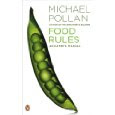
So I created this blog for the shop almost a year ago, I guess in part because "everyone's doing it". I also wanted another free avenue to promote my business and reach out to people who prefer not to be on our email list and also those who tend to navigate to the FB/blog/Twitter way of communication. For almost the last year, the blog has been mostly about certain products in the shops; many entries have been written by the staff, who each get excited about different things, so why not promote those differences? For some on the staff (including me at times, admittedly), it's been more of a chore - who has time to write a blog? Who's going to read it? What the heck do I write about?
This year, while I will still have members of the staff (sorry, you guys aren't getting off that easy! :) ) contribute to it, I am going to try something different as well. I think I got the idea from watching "Julie & Julia" recently, where one of the main characters cooked her way through Julia Child's cookbook and blogged about it daily. I recently picked up a copy of Michael Pollen's "Food Rules, an Eater's Manual" and finished it in almost an afternoon. He really inspires me and I have often said that his book "The Omnivore's Dilemma" changed my life. "Food Rules" lists 64 ways we can choose to look at food differently, change our food habits and ultimately live healthier lives and have a healthier relationship with food. So, for the next few months (sorry, I can't commit to blogging everyday just yet!), I'll write a short(er) blog entry about each "rule" and how it affects me, or my business, or maybe just tell you what I think. We'll see how it goes...
And to get back to my earlier comment about "Omnivore's Dilemma", it did change my life, but in some surprising ways. I feel like although there is still the lazy 60+ hour a work week me who will eat Potbelly's or other takeout a couple of days a week, at least I'm doing that less often and I feel more aware of what I am putting in my body. And there have been those days: I find myself stopping more and more often to critique what it is I'm eating, how it's made, where it comes from, how far away it comes from, what the ingredients are. And even more surprisingly, "Omnivore's Dilemma" empowered me as a business owner. I own a small grocery that sells mostly small-batch foods, artisan foods, with real ingredients you can pronounce. Many if not most of the items are created using sustainable and/or organic methods. Many are produced within 300 miles of the city of Chicago. Part of my buying strategy when bringing products in is to ask those same questions noted above (how is it made? where is it from?, etc. as well as: does this item fit into the store's philosophy?) and after reading these 2 books, I have a better understanding of why it's important to sell the products I do. Though I'm sure some people disagree and would argue "but who can afford to eat that way?"
Well, if they make anything near the salary that I make, I can definitely understand where that question stems from. My answer to that is part 1 and 3 of Michael Pollan's mantra:
Eat Food. Mostly Plants.
Not too much. I really do believe that you can be frugal and still eat according to this. Food full of flavor doesn't require that you need to eat a ton of it. Choose real foods, made without chemicals or other fillers/preservatives and eat to enjoy. It will take time, but personally I believe there is such a value to it that to me it's totally worth it. And I know it's become easier as I've learned more about which foods to choose and as more and more options have become available. I meet more small food entrepeneurs every year I am in business, attend farmer's markets, talk to my colleagues and customers who share this same value and the variety and choices ARE growing. It needs to.
Stay tuned for Rule #2. Thanks for reading!












